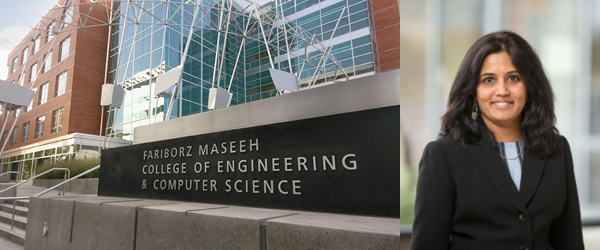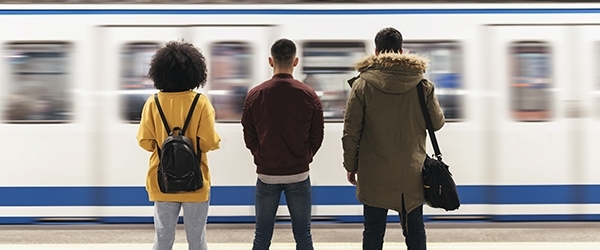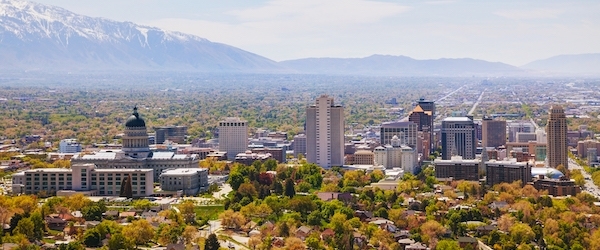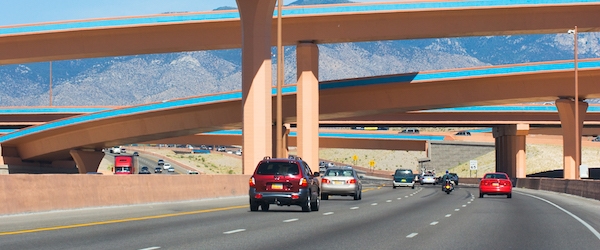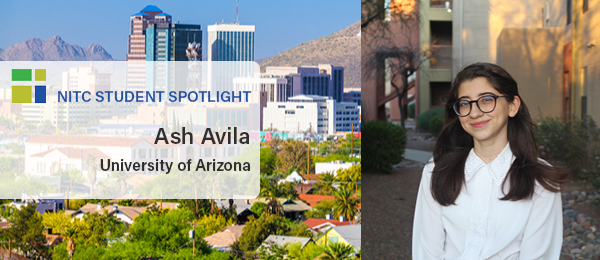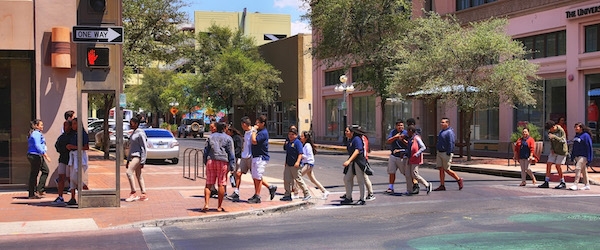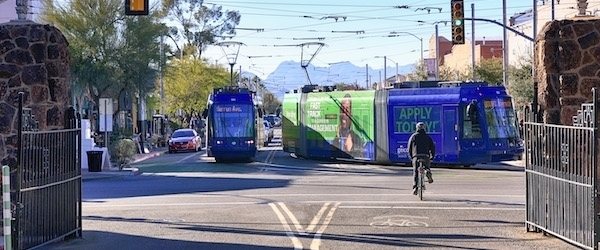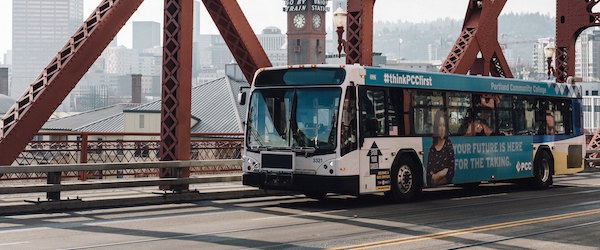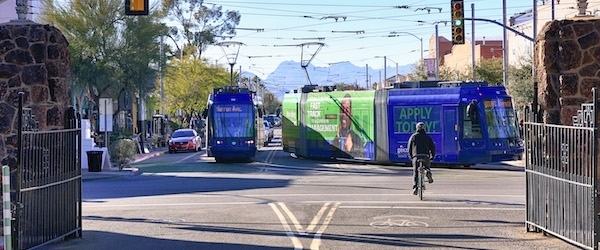Dr. Sirisha Kothuri of Portland State University Awarded 2021 APBP Research Professional of the Year
We're proud to announce that Dr. Sirisha Kothuri, Senior Research Associate at Portland State University, has been awarded the 2021 Research Professional of the Year award by the Association of Pedestrian and Bicycle Professionals (APBP). The APBP Professional of the Year Awards recognize the achievements of pedestrian and bicycle professionals made in the last twelve months in the private, public, research, and nonprofit sectors.
Dr. Kothuri’s contributions to advance the state of practice in bicycle and pedestrian safety research are outstanding. She has worked to inspire the next generation in our field and advance the professional knowledge of others through research around multimodal traffic operations, bicycle and pedestrian counting, and safety, with an emphasis in innovation in non-motorized transport.
Watch her accept the award:
"Transformative Transportation Survey Methods: Enhancing Household Transportation Survey Methods for Hard-To-Reach Populations," is a new article published in the September 2021 issue of Transportation Research Part D. It was co-authored by Amy Lubitow, a sociology faculty member at Portland State University, Erika Carpenter, a sociology graduate student, and Julius McGee, a faculty member in urban studies and planning.
The study explores the challenges that hard-to-reach populations face in completing household activity surveys. Researchers drew on qualitative data from hard-to-reach populations regarding the limits of the Oregon Household Activity Survey and found evidence that the survey methods lack social, cultural, and linguistic applicability for Black, Indigenous and other people of color, as well as low-income populations. The authors argue that Oregon’s household travel survey prioritizes certain ways of understanding and experiencing mobility that are, by default, exclusionary. The article concludes in sharing insights regarding how transportation professionals might ...
Read morePolycentric development is being promoted to lessen problems of urban sprawl and reduce vehicle miles traveled (VMT). A new article published in the August 2021 issue of Applied Geography examines the difference between "morphological" and "functional" polycentricity in the Wasatch Front Region.
"Trip generation, trip chains and polycentric development in metropolitan USA: A Case Study of the Wasatch Front Region, Utah" asserts that walking friendly built environments are a critical concern in generating trip chains within urban centers, and public transit is an essential mode to connect centers.
Authored by Yehua Dennis Wei, Weiye Xiao and Yangyi Wu of the University of Utah Department of Geography, the paper draws on findings from the NITC project "Reducing VMT, Encouraging Walk Trips, and Facilitating Efficient Trip Chains through Polycentric Development."
The authors argue that moderately compact urban design helps trip generation more than extremely compact urban design. The study examines polycentric development in the Wasatch Front Region, Utah, from a morphological perspective using employment data and a functional perspective by analyzing trip chain behavior. Regarding trip chains, the researchers find that although the automobile is the dominant travel...
Read moreWe're proud to announce the publication of a new NITC dissertation: "Modeling Capacity: Multiple Weaving Areas," by Sheida Khademi of the University of Texas at Arlington.
"Traffic congestion on freeway systems is one significant concern in urban areas throughout the U.S.A. In this era, building new freeways to reduce congestion is less feasible due to the high capital and social costs. Thus, the effective management and operation of existing freeway facilities has become a preferred approach to reduce traffic congestion. Using the outcomes of this research, agencies can get an idea of which effective variable they should control to manage freeways' multiple weaving areas more efficiently; obtaining the highest capacity while planning for existing freeways. The results will be presented to DOTs and MPOs. The model would be highly useful and money-saving for these agencies, as they prefer to obtain higher capacity by managing existing freeways rather than buying right of ways," Khademi said.
Systematic, well-designed research provides the most effective approach to the solution of many problems facing highway administrators and engineers. Traffic congestion on freeway systems is one significant concern in urban areas throughout the U.S.A. In this era, building new freeways to...
Read moreAsh Avila, a 2022 TRB Minority Student Fellow, will be a junior this fall in the Sustainable Built Environment undergraduate program at the University of Arizona. She is working with NITC researchers Ladd Keith, Nicole Iroz-Elardo and Kristina Currans looking at the intersection of transportation and heat as it relates to climate adaptation planning for active travelers. This summer, Ash is working on analyses related to exploring transportation infrastructure and environmental influences of thermal comfort and evaluating some potential mitigations.
Tell us about yourself?
I’m a third year student at the University of Arizona majoring in Sustainable Built Environments with a minor in Spanish. I grew up in a small Southern Arizona border town which led to my interest in urban design, especially in communities with majority Latino populations. In my free time, I work in a small community garden and love to crochet.
What (or who) has influenced your...
Read moreHow can we use a variety of data-driven speed management strategies to make transportation safer and more efficient for all modes–whether you’re driving, walking or taking transit?
The project was led by Yao Jan Wu, director of the Smart Transportation Lab at the University of Arizona. Co-investigators were Xianfeng Terry Yang of the University of Utah, who researches traffic operations and modeling along with connected automated vehicles, and Sirisha Kothuri of Portland State University, whose research has focused on improving signal timing to better serve pedestrians. Join them on Sept 15, 2021 for a free webinar to learn more.
"We want to improve mobility for all users, be it pedestrians, vehicle drivers or transit riders, and there are different strategies to do this. How do we harness data to drive us to these strategies?" Kothuri said.
Funded by the National Institute for Transportation and Communities (NITC), this multi-university collaboration addressed the question from three angles:
- Wu and his students in Arizona looked at the impact of speed management strategies on conventional roadways...
The latest report funded by the National Institute for Transportation and Communities – Transit Impacts on Jobs, People and Real Estate, from the University of Arizona – represents the culmination of nearly a decade of research into the economic effects of transit. To unpack the dense and substantial findings from 17 LRT, 14 BRT, 9 SCT, and 12 CRT systems in 35 metro areas across the United States, we've been telling the story in chapters. Previously we have explored how transit affects real estate rents, the locations of jobs and where people live.
Now we'll dive into the final chapter: Volume 5: Improving Transit...
Read moreLed by Dr. Stephen Fickas of the University of Oregon (UO), transportation researchers are working to give bicyclists smoother rides by allowing them to communicate with traffic signals via a mobile app.
The latest report to come out of this multi-project research effort introduces machine-learning algorithms to work with their mobile app FastTrack. Developed and tested in earlier phases of the project, the app allows cyclists to passively communicate with traffic signals along a busy bike corridor in Eugene, Oregon. Researchers hope to eventually make their app available in other cities.
"The overall goal is to give bicyclists a safer and more efficient use of a city’s signaled intersections. The current project attempts to use two deep-learning algorithms, LSTM and 1D CNN, to tackle time-series forecasting. The goal is to predict the next phase of an upcoming, actuated traffic signal given a history of its prior phases in time-series format. We're encouraged by the results," Fickas said.
Their latest work builds on two prior projects, also funded by the National Institute for Transportation a Communities: in which Fickas and his team successfully built and deployed a hardware and software product called ‘Bike Connect’ which allowed people on bikes to give hands-free advance...
Read moreResearch demonstrates that marginalized populations experience significant barriers in accessing transit. The Transportation Research and Education Center (TREC) and the Homelessness Research & Action Collaborative (HRAC) at Portland State University are working with the University of Utah in a project funded by the National Institute for Transportation and Communities (NITC) to understand how people from selected historically marginalized communities experience discrimination and harassment on transit and in public areas such as sidewalks, bus stops, and transit platforms when accessing transit.
The study will be conducted in two sites: Portland, Oregon and Salt Lake City, Utah. In Portland, the study population will include racially and ethnically diverse people experiencing homelessness and people who identify as transgender and gender nonconforming; and ride TriMet. In Salt Lake City, the study population will include people experiencing homelessness as well as diverse groups based on their gender, racial, and ethnic identity; who ride Utah Transit Authority. We are seeking transit riders to help inform the study through photos and interviews. Participants will be compensated up to $50 for their labor. The researchers will be recruiting participants for this study through the end of August.
PARTICIPATION INVOLVES:
... Read moreThe latest report funded by the National Institute for Transportation and Communities – Transit Impacts on Jobs, People and Real Estate, from the University of Arizona – represents the culmination of nearly a decade of research into the economic effects of transit. To unpack the dense and substantial findings from 17 LRT, 14 BRT, 9 SCT, and 12 CRT systems in 35 metro areas across the United States, we've been telling the story in chapters. Last month we focused on how transit affects where people live, and before that we explored how it impacts the locations of jobs.
This month, we're delving into volume 4 of the final report: Impact on Real Estate Rents with Respect to Transit Station Proximity Considering Type of Real Estate by Transit Mode and Place with...
Read more
